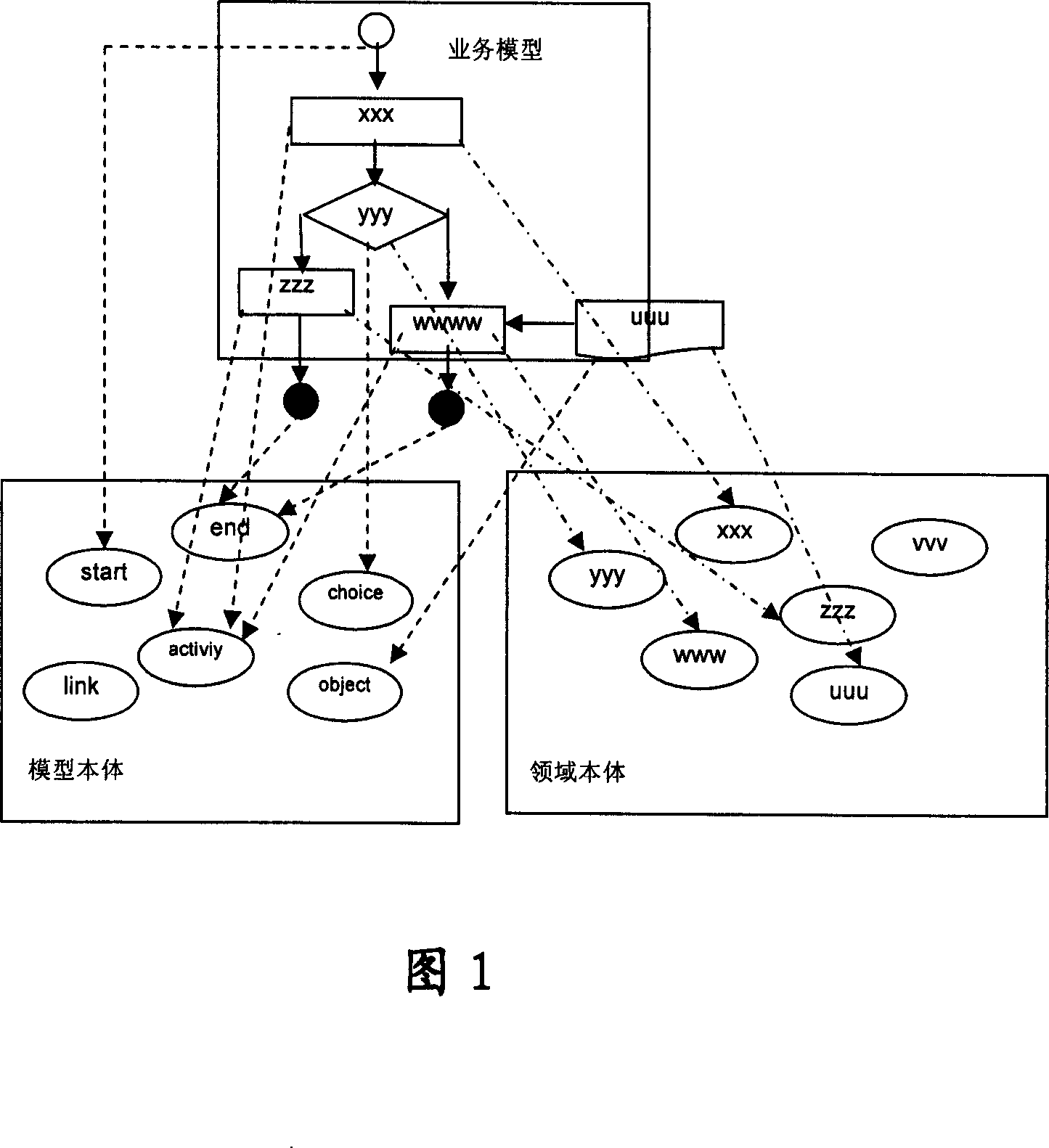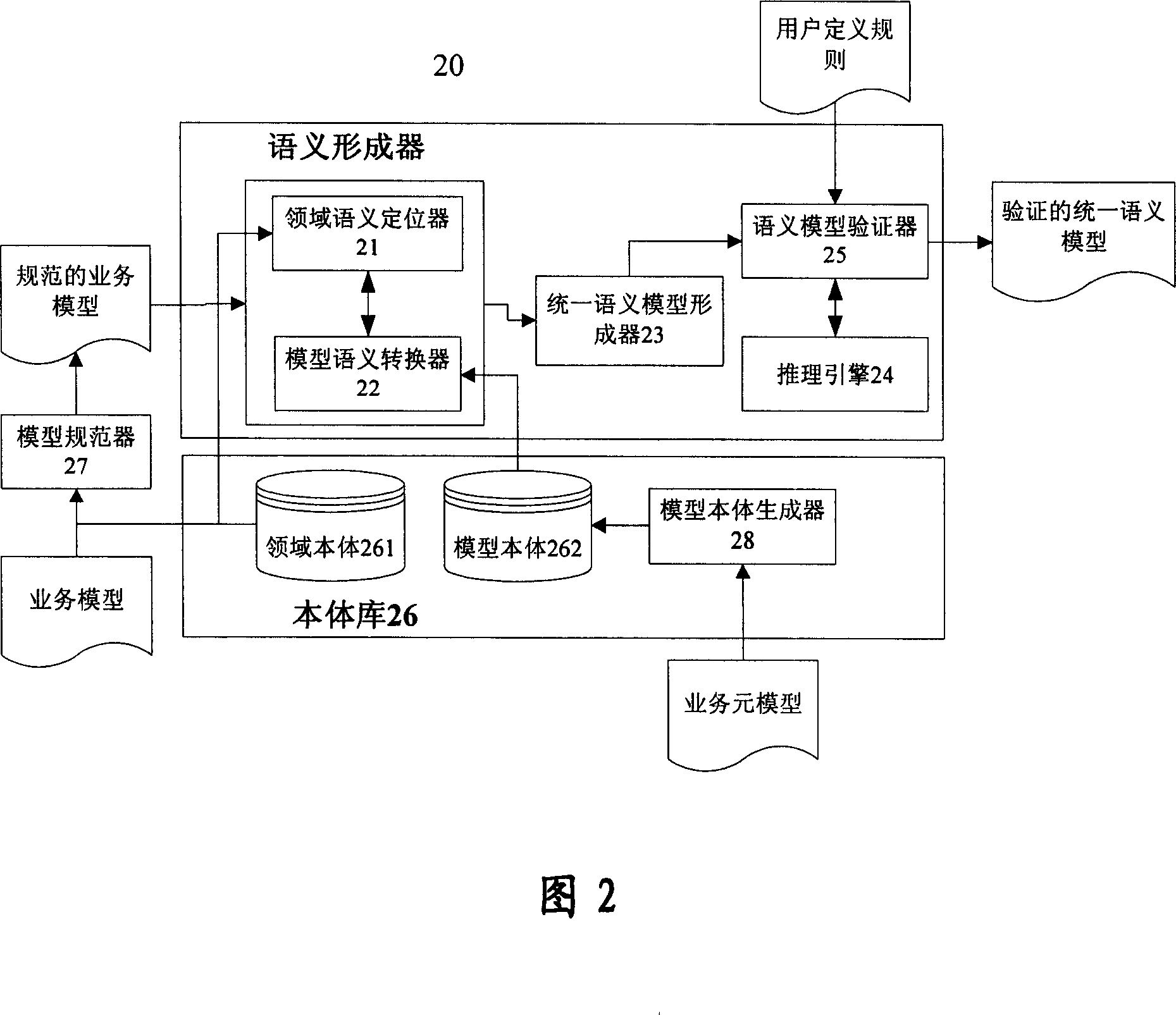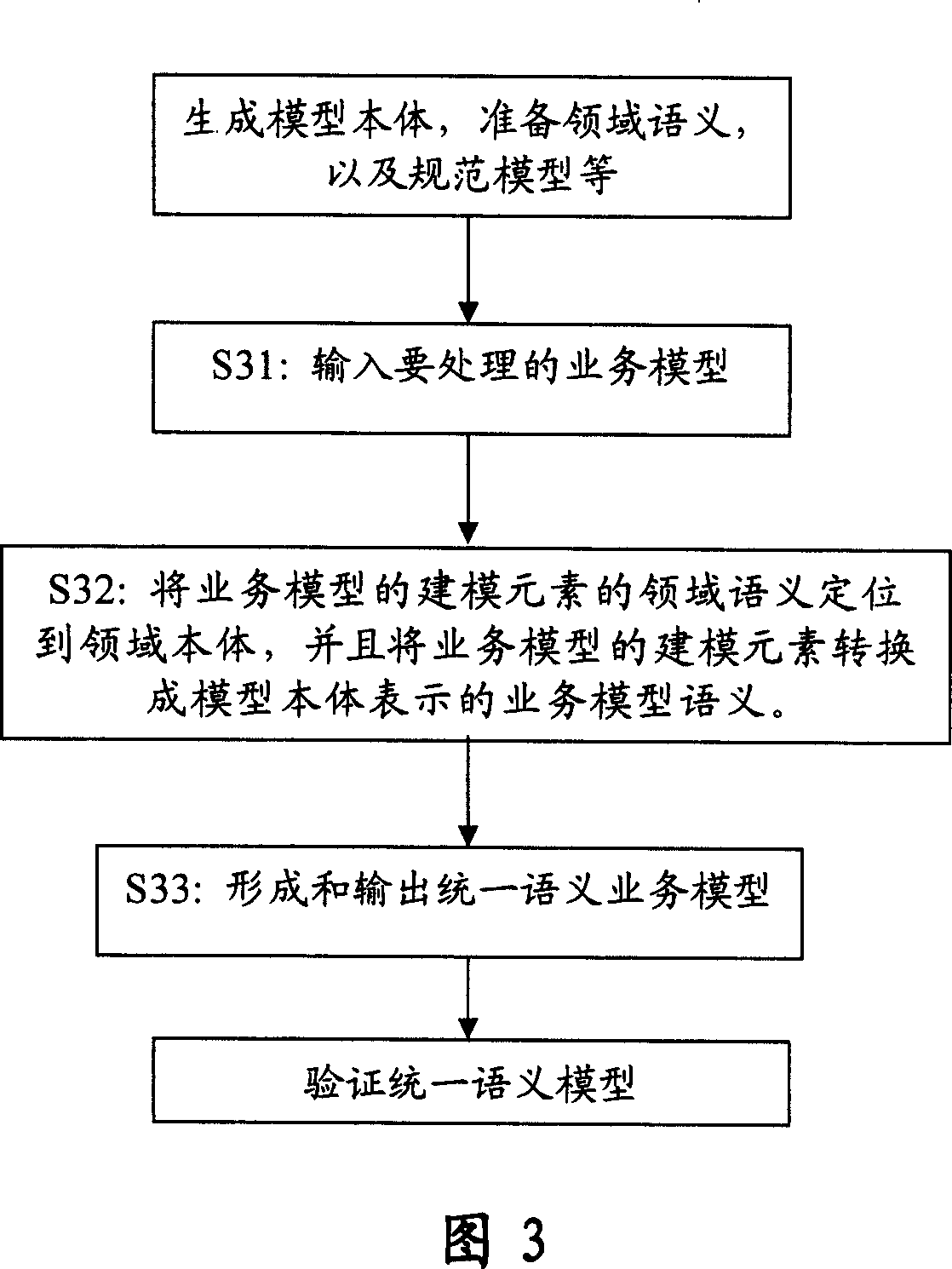Method and device for integrating model sementics and field sementics in service model
A business model and integrated model technology, applied in the direction of program control devices, instruments, knowledge expression, etc., can solve problems such as difficulty in establishing model relationships, lack of mechanism for sharing domain semantics, and inability to fully share model semantics
- Summary
- Abstract
- Description
- Claims
- Application Information
AI Technical Summary
Problems solved by technology
Method used
Image
Examples
Embodiment Construction
[0040] Fig. 1 schematically shows that in the method for integrating model semantics and domain semantics in a business model according to the present invention, the model semantics and domain semantics in the business model are assigned and located to the model ontology and the domain ontology. Model ontology collects model semantics, and domain ontology collects domain semantics. Then, the semantics of the business model can be clearly specified in the following way, that is, the modeling elements of the business model are linked with the model ontology, and the words and phrases in the modeling elements, such as titles or notes, are annotated as concepts or concepts in domain semantics. relationship. The common ontology representation ensures that the model semantics and domain semantics can be transformed into a unified semantic model.
[0041] FIG. 2 shows a system structure diagram of an apparatus 20 for integrating model semantics and domain semantics in a business model ac...
PUM
 Login to View More
Login to View More Abstract
Description
Claims
Application Information
 Login to View More
Login to View More - R&D
- Intellectual Property
- Life Sciences
- Materials
- Tech Scout
- Unparalleled Data Quality
- Higher Quality Content
- 60% Fewer Hallucinations
Browse by: Latest US Patents, China's latest patents, Technical Efficacy Thesaurus, Application Domain, Technology Topic, Popular Technical Reports.
© 2025 PatSnap. All rights reserved.Legal|Privacy policy|Modern Slavery Act Transparency Statement|Sitemap|About US| Contact US: help@patsnap.com



